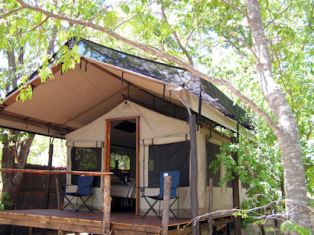 |
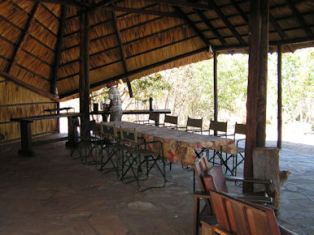 |
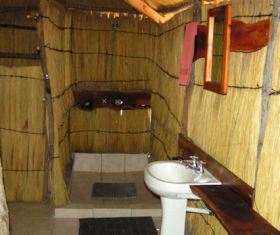 |
|
Nhoma Safari Camp Tsumkwe area |
See also: Actor of "The Gods Must Be Crazy"
Nhoma Safari Camp is a small activity orientated, tented camp, situated in the north eastern corner of Namibia 80 km from Tsumkwe within the traditional area of the Ju/’hoan San or Bushmen (as they are commonly known in Namibia). It borders the Nyae Nyae and Nna Jaqna Conservancies. Tourism allows the community to earn cash in order to buy food and supplies not provided by the surrounding environment.
YouTube video of Bushmen Living Museum:
Activities offered at the camp ranges from hunting with the Bushmen hunters,
veld food collection, the making of hunting equipment to traditional games and
the healing dances. When conditions are suitable a short night drive is
undertaken to view springhare and look for other nocturnal animals.
A 5-day Bushcraft and Tracking Course is offered on set dates between March and
July every year.
A visit to Nhoma Safari Camp will destroy the stereotype image people have of
Bushmen and replace it with a more realistic view as well as amazement for the
skills and knowledge lost by modern man. This is only possible due to the
limited number of visitors facilitating individual attention, the location of
the camp close to the village, the remoteness and wildness of the surrounding
area, the natural friendliness and spontaneity of the community and the
impromptu activities.
Accommodation and camping has to be pre-booked. Accommodation is in ten safari
tents on wooden decks with a view over the Nhoma omuramba (fossil river bed).
The tents are well spaced and shaded by Zambezi Teak trees.
 |
 |
 |
The tents
Three tents have double beds with corner baths - the bathroom in a partition of
the tent. Two tents have a double and a single bed and corner bath - the bathroom
in a partition of the tent.
One tent has a double and a single bed and shower - the bathroom in a partition
of the tent.
Four tents have twin beds with showers - the bathrooms are grass-enclosed and
connected to the bedroom by a door.
Camping: We have a campsite with ablutions consisting of two showers and two
toilets.
Water: Water comes from the village borehole and is safe to drink, but purified
water is provided for drinking.
Electricity: There are no electrical points in the tents. Batteries can be
charged in the dining area. Lights are solar powered.
Hot water: Hot water is provided by gas geysers or wood fired boilers.
Cell phone reception: It is possible to have cell phone reception, but only in
the dining area. if the Tsumkwe signal is not working, there is no reception.
Internet: Internet is not available.
Safes: All tents have a small safe.
Meals and drinks: Meals and drinks are provided in the central dining area and
are included in the rates.
Khaudum day tour: The best time to visit Khaudum is outside the rainy season
from June to October when animals visit water holes. The entrance to the park is
60km or a one-and-a-half hour drive away.
Overnight Khaudum tours:
From 2012, we will be doing overnight tours to Khaudum again as the facilities
are to be upgraded. The best is to combine a stay at Nhoma with a stay in the
park. The minimum recommended stay at Nhoma is one night to allow for a bush
walk on the second morning and to depart for the park in the afternoon. The
minimu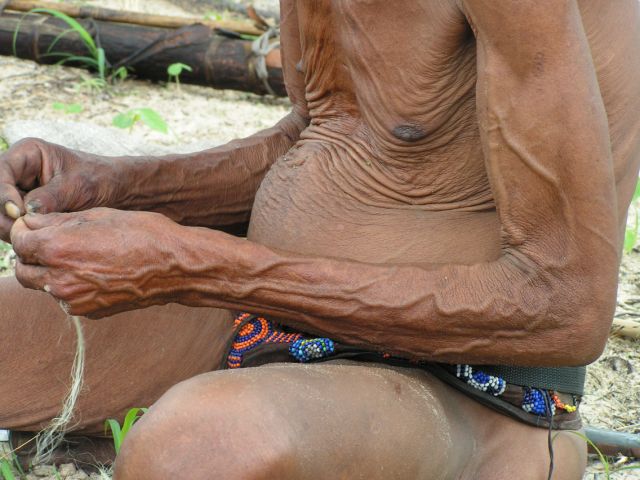 m
recommended time in the park will be two nights so that one has at least one
full day in the park.
m
recommended time in the park will be two nights so that one has at least one
full day in the park.
Khaudum escorts:
A Khaudum escort is a guided tour, but the guests drive their own vehicle and
have their own food and accommodation arrangements. It is advisable not to
travel through Khaudum with only one vehicle. The tour can return to Nhoma,
Tsumkwe or exit the park in the north. Exiting the park in the north means our
guide have to drive all the way back to Nhoma and it is therefore only possible
if the group consists of at least four people or an extra day is paid for.
General
The
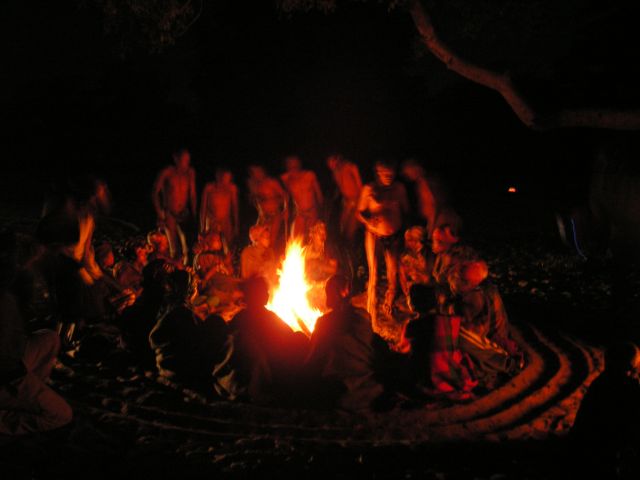 3
842 square km park was only proclaimed in 1989, making it a relatively new park.
The park is in the Kavango region, bordering Botswana and the Nyae Nyae
Conservancy. The area used to be inhabited by Ju/'hoan Bushman or San groups,
but they were relocated to the Nyae Nyae area when the park was proclaimed
Except for the border with Botswana, the park is not fenced and game migrate
freely into the neighbouring conservancies. The park was proclaimed to protect
the woodland savannah biome of north eastern Namibia which is the habitat for
the endangered roan antelope. They occur here at the edge of their natural
distribution. Wild dogs are another endangered species that occur in the park,
but they are usually only seen in September and October at waterholes before the
rains start. Ground hornbills and several species of raptors are amongst the
vulnerable bird life found in the park. Game and bird viewing is only really
good when the clay pans have dried up by the end of August. This is also the
time of year when huge herds of elephants congregate at the waterholes in the
late afternoon, often keeping other game from drinking. The estimated number of
elephants during October in
the park is 3500. Because of its inaccessibility, visitors to the park are few
and animals are not accustomed to vehicles, causing them to flee. Two fossil
river beds traverse the park and are where most game is found. In between these
omuramba, the roads are very sandy.
3
842 square km park was only proclaimed in 1989, making it a relatively new park.
The park is in the Kavango region, bordering Botswana and the Nyae Nyae
Conservancy. The area used to be inhabited by Ju/'hoan Bushman or San groups,
but they were relocated to the Nyae Nyae area when the park was proclaimed
Except for the border with Botswana, the park is not fenced and game migrate
freely into the neighbouring conservancies. The park was proclaimed to protect
the woodland savannah biome of north eastern Namibia which is the habitat for
the endangered roan antelope. They occur here at the edge of their natural
distribution. Wild dogs are another endangered species that occur in the park,
but they are usually only seen in September and October at waterholes before the
rains start. Ground hornbills and several species of raptors are amongst the
vulnerable bird life found in the park. Game and bird viewing is only really
good when the clay pans have dried up by the end of August. This is also the
time of year when huge herds of elephants congregate at the waterholes in the
late afternoon, often keeping other game from drinking. The estimated number of
elephants during October in
the park is 3500. Because of its inaccessibility, visitors to the park are few
and animals are not accustomed to vehicles, causing them to flee. Two fossil
river beds traverse the park and are where most game is found. In between these
omuramba, the roads are very sandy.
Only four-wheel drive vehicles can negotiate the roads in the park and tourists
should travel in groups of two vehicles - for their own security. The southern
part of the park along the Nhoma omuramba is more accessible than the northern
part where the tracks are very sandy. The two unfenced camps,
Khaudum Camp and
Sikereti, are neglected: the facilities are not functional and visitors should
be self sufficient, except for firewood, which is still supplied. Even water is
not always available and the nearest fuel stations are at Tsumkwe, Divundu,
Rundu and Grootfontein. No advanced bookings can be made for the camps and no
camping fees are charged. Permits are issued and entrance fees are charged at
the camp offices. Sikereti camp is 57km north of Tsumkwe. Driving time to
Sikereti from either Tsumkwe or Nhoma is two hours. Camping is only allowed in
one of the two camps, but one may stay at the water holes until after sunset.
Location
The turn-off is approximately 185 km on the C44 gravel road when coming from
Grootfontein or 40 km from Tsumkwe. Nhoma is 40 km along road D3301; four wheel
drive is not required. Keep below 80 kph because of unexpected sandy stretches
after Vicksrus village. Two wheel drive vehicles must park below the dune and
wait to be picked up.
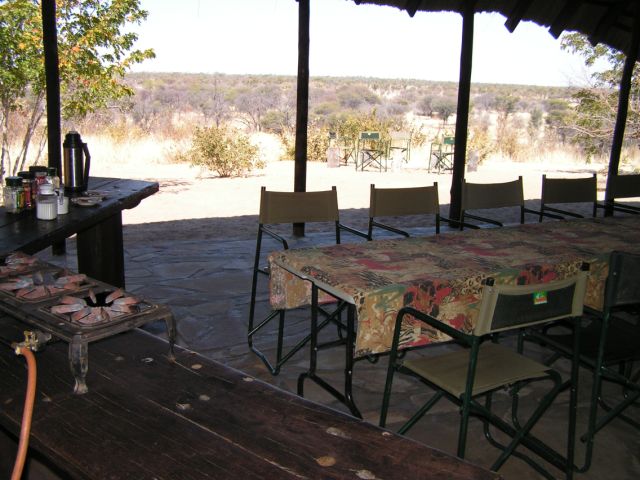 |
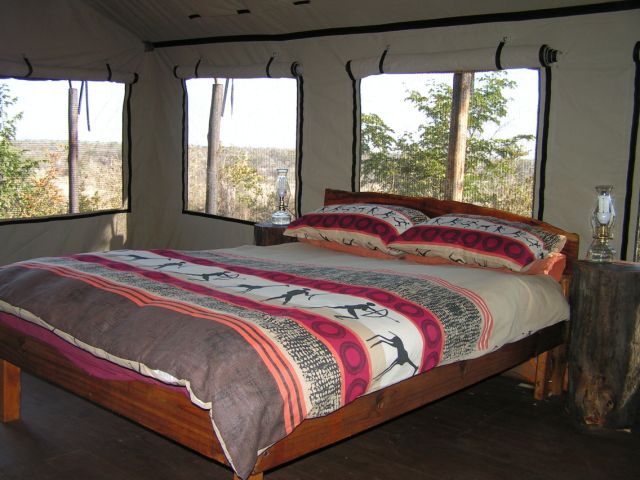 |
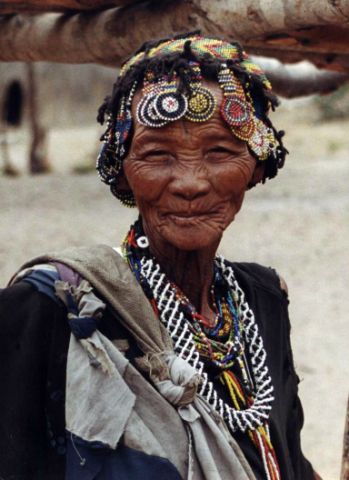 |
Notes:
Rates are subject to change without prior notice should tax be increased or Government levies introduced. Rates include Value Added Tax.
Contact &
reservations:
E-mail:
info@namibweb.com
Reservations are only accepted in writing: by fax or via e-mail.
Final availability confirmation: in writing: by fax or via e-mail.
Terms & conditions, Payment options and Cancellation policy
Page created and serviced by

www.namibweb.com
Copyright © 1998-2025
namibweb.com - The online guide
to Namibia
All rights reserved |
JOIN
|
VIDEO PORTFOLIO
|
VIDEO/PHOTO COLLECTION
Telegram
| YouTube |
Blog
Page is sponsored by ETS &
Exploring Namibia TV
Disclaimer: no matter how often this page is updated and its accuracy is checked,
www.namibweb.com and ETS
will not be held
responsible for any change in opinion, information, facilities, services,
conditions, etc. offered by
establishment/operator/service/information provider or any third party
Description & images: Copyright © Nhoma Camp